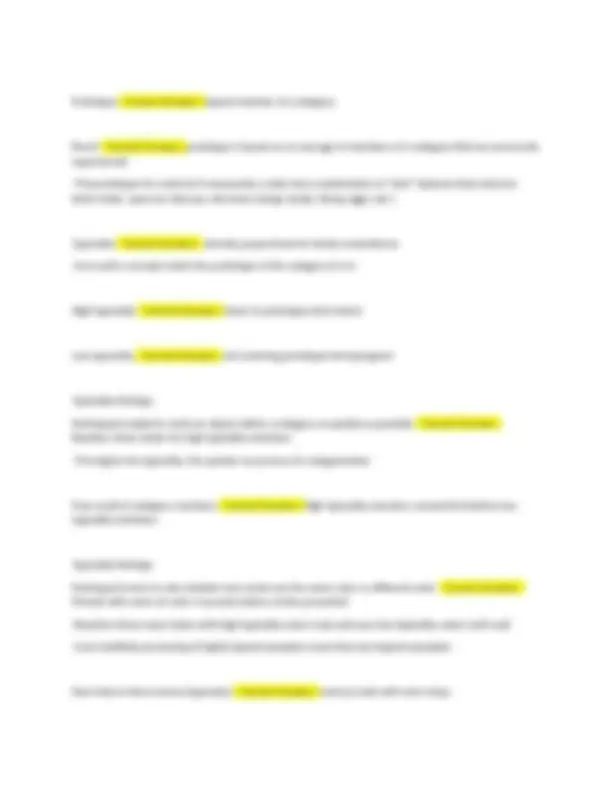



Study with the several resources on Docsity

Earn points by helping other students or get them with a premium plan


Prepare for your exams
Study with the several resources on Docsity

Earn points to download
Earn points by helping other students or get them with a premium plan
Community
Ask the community for help and clear up your study doubts
Discover the best universities in your country according to Docsity users
Free resources
Download our free guides on studying techniques, anxiety management strategies, and thesis advice from Docsity tutors
A series of questions and answers related to conceptual knowledge and categorization in cognitive psychology. It explores key concepts such as the definitional approach, family resemblance, prototype theory, and exemplar theory. The document also touches upon the hierarchical organization of categories and the importance of the basic level of categorization. While it offers a basic introduction to these topics, it lacks in-depth analysis and further exploration of the complexities within each concept.
Typology: Exams
1 / 4

This page cannot be seen from the preview
Don't miss anything!


[COMPANY NAME] [Company address]
Conceptual knowledge - Correct Answers: knowledge that enables us to recognize objects and events and to make inferences about their properti Concept - Correct Answers: the meaning of an object, event, or abstract idea Category - Correct Answers: - contains all possible examples of a particular concept
Better performance for highly than lowly typical colors Not language based Exemplar approach to categorization - Correct Answers: membership in a category is determined by comparing the objects to exemplars within that category Exemplar - Correct Answers: actual member of the category that fits a majority of criteria of the category Hierarchical organization - Correct Answers: categories are grouped at different levels in Hierarchical organization: Larger, more general categories divided up into smaller and more specific categories Three levels of organization: - Correct Answers: Global Basic Specific Global Basic Specific - Correct Answers: vehicle car boat sedan, truck, yatch, rowboat Participants name as many common characteristics for a category at different levels of organization as possible - Correct Answers: Global - 3 characteristics on average Basic - 9 characteristics on average Specific - 10.3 characteristics on average Basic level is most psychologically important because the cost of moving up is steep, but the gain of moving down is small - Correct Answers: true